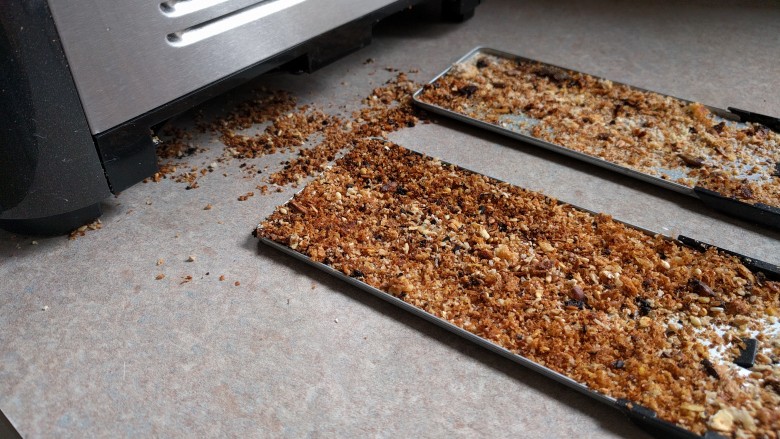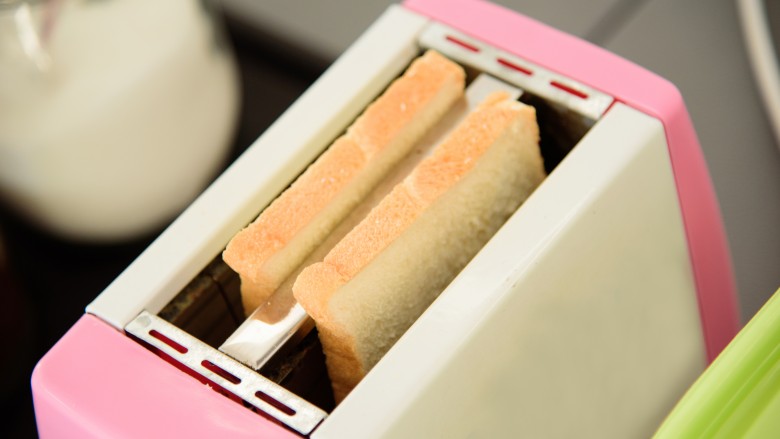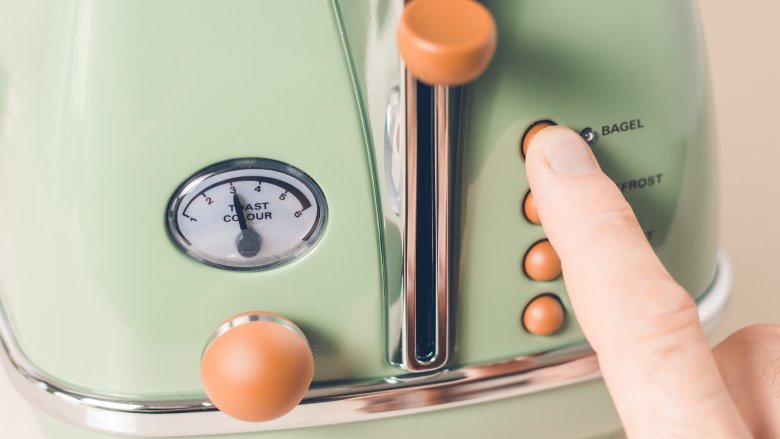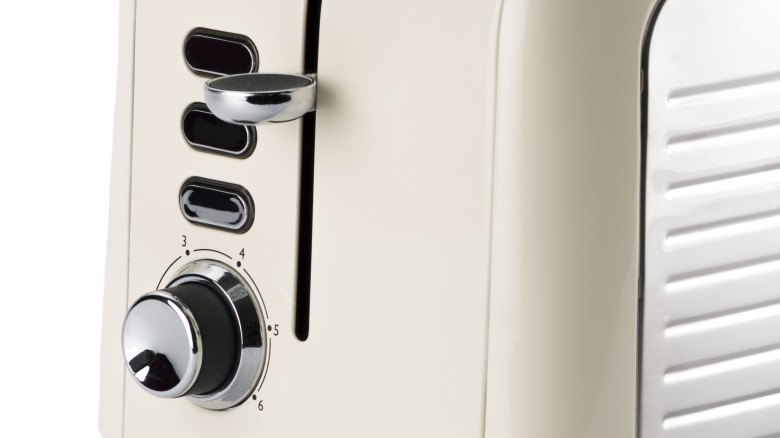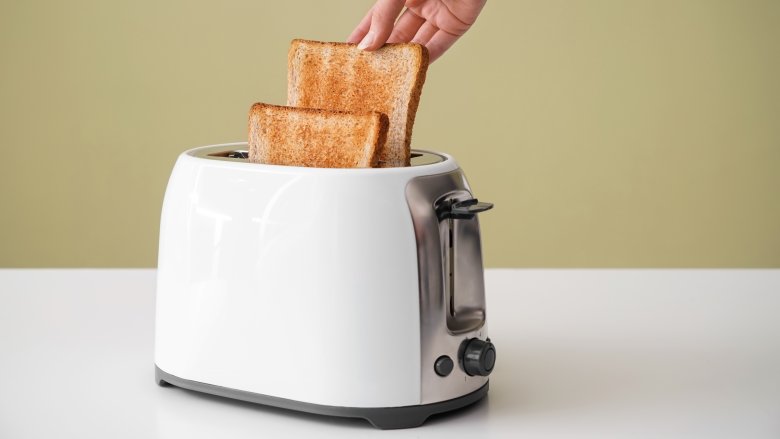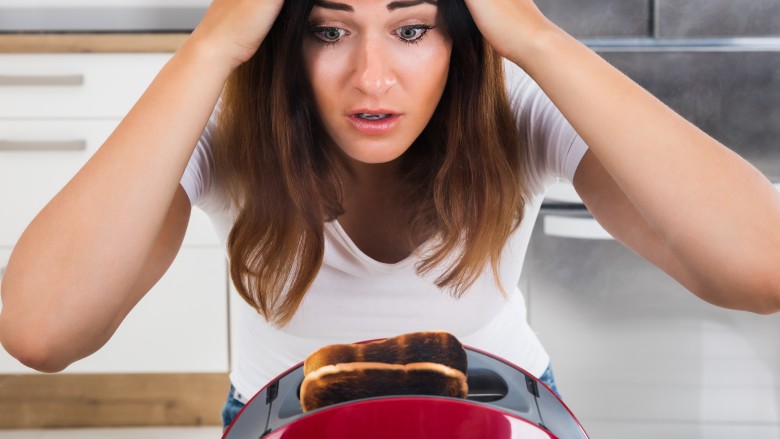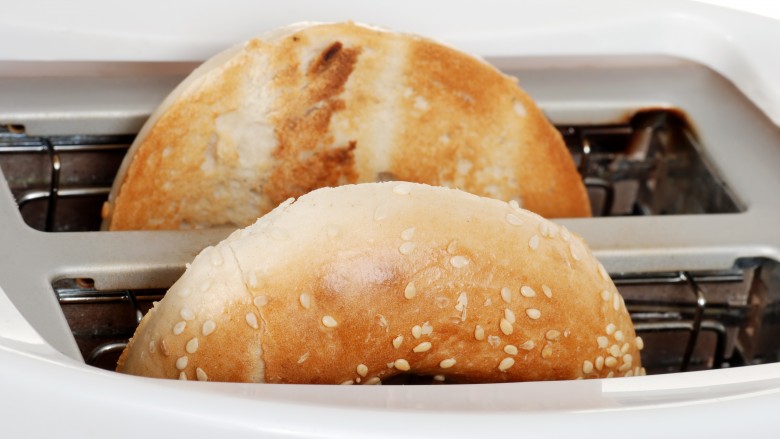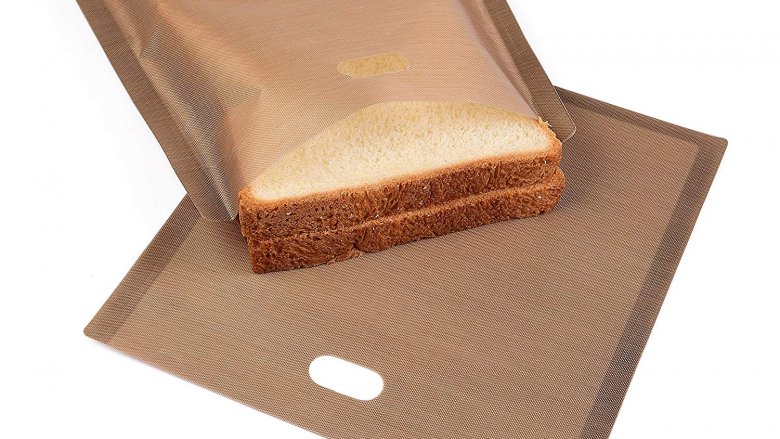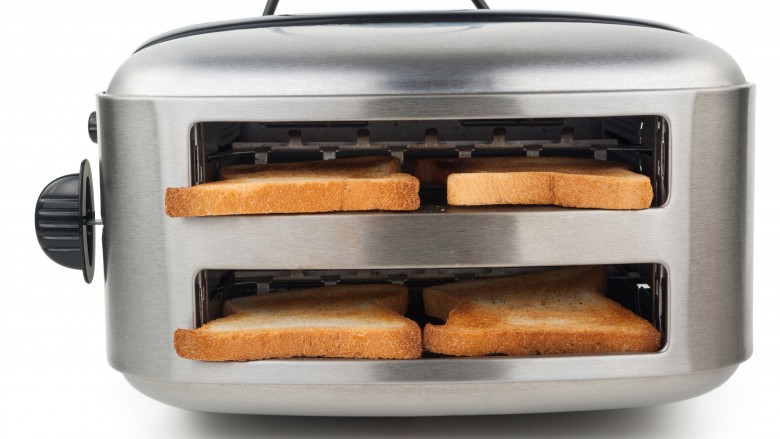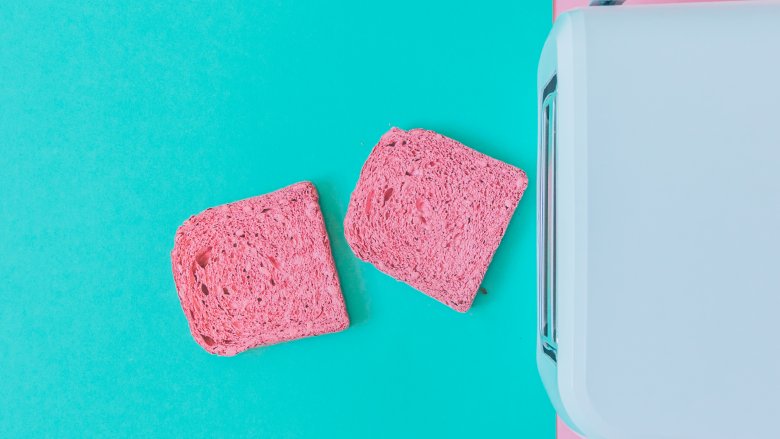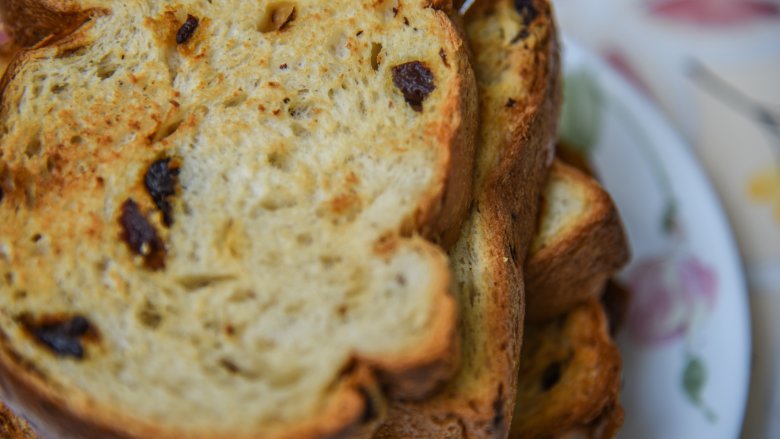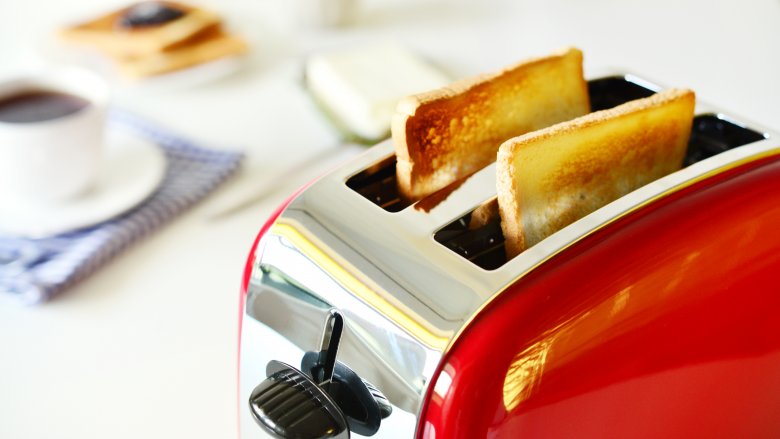Ways You've Been Using Your Toaster All Wrong
intro
We may receive a commission on purchases made from links.
The problem with toasters is they're almost too simple to use. Buy a $2,000 refrigerator and you will, in all likelihood, at least skim through the manual. The same goes for any other large, expensive, or semi-sophisticated appliance. But not toasters: often costing no more than a school-night visit to a bar, and usually featuring less than half a dozen simple controls, the only reason most people even touch the manual is to pick it up off the floor and dump it in the trash. That's a mistake.
Making a piece of toast is much like many other apparently simple acts, like sex, or voting: you don't need to know much to get it done, but do a little research first and you might have less to regret when you're done. So for fewer regrets and better toast, read on.
You haven't cleaned it recently
Your toaster gets dirty in two ways: crumbs fall off the bread as it cooks and accumulate in the bottom, and stuff like dust and oil lands on the outside of the unit and gets baked on. Both of these things are bad news, but while it's easy to see the outside getting sticky and gross and feel inspired to wipe it down, the inside presents more of an issue.
Every piece of toast you make leaves crumbs behind, and not just on the kitchen counter. But since it's going on out of sight, it's hard to remember that it's happening. This growing pile of crumbs presents no issues at first, but like a stalagmite it can grow, slowly and imperceptibly, until the whole thing clogs up and catches fire. So to avoid burning more than your bread, just clean the dang thing. Unplug your toaster, pull out the convenient tray underneath, and discard the contents. Shake the toaster over the trash to remove any crumbs that remain inside. Replace the tray. Wipe down the outside with a damp cloth and dry. Plug back in. Make more toast, repeat.
You use the wrong size bread
Buying sliced bread is very convenient (after all, no one remembers what the best thing was before it came along), but if you use it to make toast you're making a mistake. That's because bread comes in many varieties and textures, from ultra light and fluffy, to dense and heavy. And since your toaster probably has only one temperature setting, the only other way to affect the final outcome is with the thickness of the bread. The perfect piece of toast, according to experts and denied by no one ever, is crispy on the outside but soft and moist on the inside. To achieve that, you should expose the bread to enough heat that the outside gets crisp before the inside dries out, but if you start out with a quarter-inch-thick piece of pre-sliced soft bread and a lazy toaster, that's just not going to happen. However, if you slice your own and make that soft bread an inch thick, even a $10 two-slice student special has half a chance of getting it right. Heavier bread needs more time to crisp the outside and should be cut thinner to avoid a doughy center. For those new to cutting their own bread, getting consistent and even slices can take lots and lots of practice ... but remember, that's lots and lots of delicious buttery practice, so don't skimp.
You think the numbers refer to time
Since nearly every other cooking appliance you own can be set to turn off after a specific amount of time, it can be natural to assume that your toaster might work that way as well. And while that might be true of some more expensive machines, when it comes to the budget bread broilers most of us own, the truth is quite different. That's because — unless you have a really nice, expensive toaster — the technology to give your toaster a timer is just a bit too sophisticated for most manufacturers. All the numbers are really there for is to give you an arbitrary reference point for making repeatable adjustments, but as you can see in the video above, those settings will only apply to your machine. The only real downside to the arbitrary numbering system on most toasters is that no one makes a special Spinal Tap edition that goes up to 11.
You don't adjust the settings
Despite what some British tabloids would have you believe, there is no one perfect way to make toast. In the real world, some bread is thicker, and some is thinner. Some toasters cook hotter, and others cook colder. So the settings for the "perfect" slice of toast will change depending on the type of bread you have at hand, the behavior of the toaster you own, and even the temperature and age of the bread on the day you use it. If you're serious about your slice, you should be adjusting the settings almost every time you insert a piece of bread. Consider that in the morning when you first turn on your toaster, it will start at room temperature then warm up to its operating temperature as it runs through its cycle. But if you decide you want another couple of slices and turn the machine back on straight away, the residual heat left over from the first round could cause the second round of toast to burn. As a general guide: turn down the dial if the bread is softer, older, warmer, or thinner than the last piece, or if the machine is already hot. But if the bread if fresher, denser, colder, or cut thicker than the last piece, feel free to let it run longer. Or you could just leave the settings alone and accept that your life now includes badly made toast ... but then you might find it also includes shopping in your pajamas and a peer group mostly comprised of cats.
You don't use the extra-lift lever
Not all bread is created equal, so toasters are designed to work with as many sliced bread products as possible. And while that means that your toaster will effectively brown all types of bread from thick and tall to skinny and short, it also means the shorter types are a little hard to reach when it's time to apply butter. Hot toast can be painful, but sticking your fingers into a recently used toaster is something else. And since you definitely aren't sticking a metal utensil into that electrical appliance (please, don't), extracting your much-needed snack before it gets too cold can sometimes be an issue ... or not.
Believe it or not, toaster designers recognize this is an issue. Because they are also determined to avoid the interaction of toasters and metal implements, they added a feature to help you out. It might be called either an extra-lift or high-lift function, but it allows you to lift your toasted snack an extra inch or so higher than normal to make the slice easier to remove. To activate this revolutionary electrocution avoidance mechanism, simply grab the lever you push down to turn the toaster on ... and push it up instead. Your perfectly bronzed breakfast will appear like an edible phoenix from the hot crumbs of its former self.
You end the cycle too soon
Toast is great, everyone agrees — that's why there is an appliance dedicated to it. But unfortunately that greatness (and our inability to adjust the toaster correctly) gets the better of us occasionally. The problem is compounded by hunger and usually occurs shortly after you press the lever down. You're eager to eat your toast, but you don't trust the toaster not to burn it. So after a short period of time, just to see how the Maillard reaction is coming along, you hit the cancel button to pop the toast and check the progress. Of course the toast isn't ready, so you push the lever down again to give it a little more time — and then forget about it. By the time the second cycle comes to its natural conclusion, the toast is (naturally) burnt. The best way to avoid this scenario is to learn the settings for your toaster, use them correctly, and leave it to do its magical work in peace.
You put bagels in the wrong way
Settings aside, toasting regular bread is as simple as inserting a couple of slices and dropping the lever. But when it comes to bagels, things can get just a little more complicated. A special bagel button is one of the more common extra features that appear as toasters get more expensive, and while it's easy to just punch the button and throw in a bagel, if you haven't read the manual you might just as well not bother at all. Since bagels are denser than most of the bread you might put in a toaster, it can take a bit more time to get good and crispy. And since bagels only really have one side that will benefit from toasting, you have a 50 percent chance of putting it in the wrong way. While most toasters add time to the cycle when the bagel button is pushed (to help brown the denser dough), some toasters also reduce the temperature of the outer heating elements to prevent burning the drier crust. If you don't insert the bagel the right way (i.e., soft sides facing in), you might end up with the soft bits too soft, the hard bits too crunchy, and not enough cream cheese to cover it all up.
You aren't using toaster bags
Toasters are something of a specialist appliance. They do one thing quite well: they make toast. But if you want some cheese on that toast, use something else ... right? Putting cheese in a toaster is usually an incredibly bad idea because there's a good chance it will just melt into the heating elements and catch fire. But toasters are just too convenient to not use them to make grilled cheese. That's why the universe gave us Toastabags. Made from a Teflon-like material, Toastabags are small fireproof pockets that allow you to make a grilled cheese sandwich in a toaster without risk of fire. You can even reheat pizza or a panini, make French toast, or even just melt down a big lump of cheese for some kind of late-night drunken fondue party. Now the only limit is your imagination and the width of your toaster slot.
You decided to try a dangerous 'life hack'
Of course, you could just ignore the Toastabags, save yourself $12, and instead follow the dangerous advice of lifehacker.com. According to this "life hack," you can easily make grilled cheese sandwiches in your toaster by tipping it on its side and loading the sandwiches in flat. Listen. This might sound like a good idea to a frat boy wearing beer goggles, but to everyone else it should appear exactly as dangerous as it actually is. It seems not everyone was so discerning. And as pointed out by one commenter, even if you did try it and managed to melt your cheese without burning your house down, the toaster is just going to eject your grilled cheese straight onto the floor anyway. Mmmm. Floor cheese.
You're not thinking outside the box
We've told you about Toastabags, and we're going to say it again: you need to get some of these. They're advertised mainly for making sandwiches (and yes, they're reusable), but if you're not thinking outside the box, you're not getting enough out of your toaster.
What else should you be making inside a Toastabag? Try heating up a veggie burger for a quick lunch, and you'll be impressed at how mushy it's not. If you love fried food (and you do), you'll know how disappointing fried leftovers are. Don't microwave them — heat them up in your Toastabags instead. It's as close to magic as you'll get. You can even toast up a few tortilla shells, and you'll have almost instant chips.
Now, here's a tip we almost guarantee you've never thought of: sweet potato toast. Just slice the ends off a sweet potato, then cut it into slices that will fit inside your toaster. You'll have a hot sweet potato in minutes, perfect solo, with some sweet toppings, or in a sandwich. See? Think outside the box!
Treating all breads the same
When's the last time you changed the settings on your toaster? If you can't honestly answer that you do it almost every time, you're doing it wrong. When Huffington Post talked to Dualit USA sales director Wesley E. Smith, he said you shouldn't just find one setting and stick with that. Different breads toast at significantly different rates. Sweet breads — like cinnamon raisin — and white breads toast the fastest, so they don't need as long. The heavier breads are going to take longer, and that's why your favorite setting sometimes seems to fail you.
He also said there's something else you need to factor in: moisture. Bread toasts faster as it starts to dry out, and the process happens quickly. You might find the perfect setting for fresh bread, but it could burn that same bread three days later.
You're using the wrong toaster for the job
If you're still having toaster issues, you might want to look at the toaster itself. Gone are the days when all toasters were created equal, and getting the right one for your family is more complicated than you might think. Compact Appliance has a handy buyer's guide with great tips on what kind of toaster you should actually be getting.
If you're mostly going to be using it for bread, a standard pop-up toaster will be fine. But if you're going to be using this for things like bagels, waffles, hamburger buns, or Texas toast, you're going to want to invest in a pop-up toaster that has extra-wide slots. It'll make life easier, trust us.
If you want to use your toaster for more things, think about a toaster oven. With this, you'll have all the toast you want, plus that grilled cheese you tried to hack your toaster into making. It's also an ideal kitchen gadget for quick lunches and snacks, too, from hot sandwiches to pizza bagels. It might be worth the investment.

